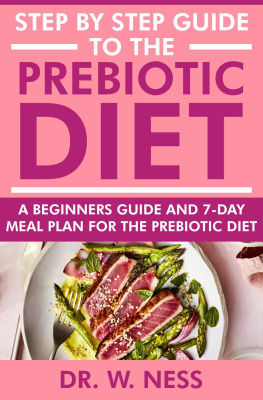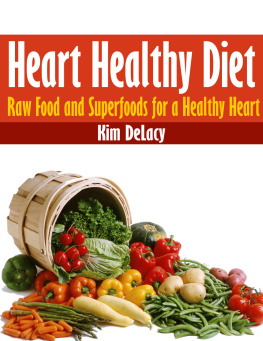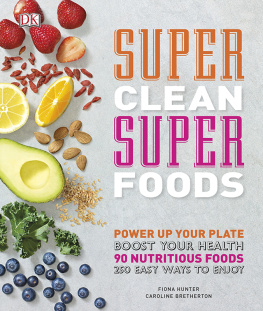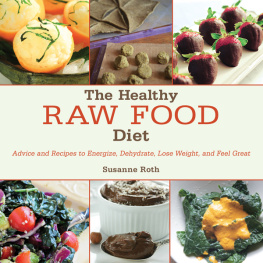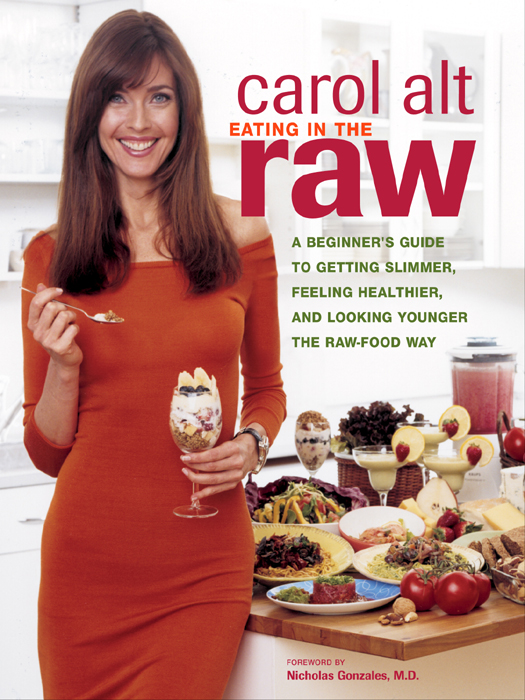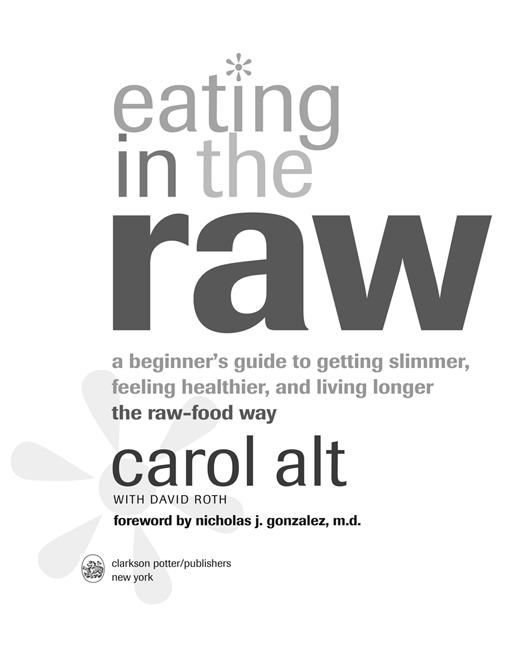foreword
nicholas j. gonzalez, m.d.
This book tells the story of raw foodwhy it is beneficial and how to begin the raw-food journey. Before that journey begins, however, Id like to share some insights into the science behind raw food, explaining just why eating raw affects the body the way it does. And it all has to do with enzymes.
Enzymes are indeed the spark of life. Without them, no flower could bloom, no human could think, no cell could live; in fact, life as we know it would not be possible. Despite such importance, most of us might not care much about enzymes, or even know what they are. We probably are all familiar with DNA, the basic genetic material of cells, the substance of our genes, which in the media, on television, and at scientific conferences gets all the publicity and grabs the spotlight. We hear on a near weekly basis about gene technology, the Genome Project to map our human chromosomes, gene therapy to treat all manner of degenerative and inherited disease. But we dont hear much about enzymes; though Ive seen literally dozens of stories in the popular press discussing the miracles of our genes, I dont recall, other than articles written about my work, any articles highlighting enzymes, what they do, their role in health, and importantly, their potential as a treatment for human disease. There are, to my knowledge, no noteworthy conferences devoted to these molecules, no PowerPoint press releases extolling their significance, no TV specials to glamorize, or mystify.
They deserve more attention, certainly. But what, actually, are these molecules, these sparks of life, as I call them? Enzymes are first, and foremost, proteins. We all have some idea of what a protein is: its the material that makes up our muscle; its the shaft of our hair, the stuff of our nails, the gel in Knox gelatin we take to strengthen those nails.
To a biochemist, proteins are interesting molecules, consisting, as they all do, of complex arrays of amino acids, their basic bricks or building blocks. There are some twenty-four or so amino acids used by us humans, including eight essential amino acids, so called because we cannot make them in our cells, and they must be provided like a vitamin or mineral in the diet. The other sixteen we can manufacture from molecules such as glucose or even from other amino acids.
Enzymes are protein catalysts, that is, a molecule that allows a chemical reaction to occur efficiently, with a minimal amount of energy needed to get the process, whatever it may be, going. Enzymes essentially allow things to happen easily. For example, there are reactions in all our cells that without catalysts would require thousands of degrees of temperature, and thousands of years to come to completion, but with these molecules present, can happen within milliseconds at our comfortable temperature of 98.6 degrees. You can see, then, why without enzymes, there would be no life at all. A thousand degrees of heat would vaporize any cell, very very quickly.
Enzymes do many things, both within our cells and without. They help produce chemical energy to fuel our cells and their many varied activities. Our immune cells, our neurotrophils and lymphocytes, use enzymes to attack and kill bacteria, viruses, and fungi, as well as dangerous cancer cells that some scientists believe form every day in all of us. In the nucleus, another set of these unusual proteins allow DNA to repair itself from the ravages of free radicals and other toxic assaults, and in fact, without certain enzymes our genetic material could not duplicate itself as needed for cell division. Thats a pretty important assignment, when you consider that, for example, the lining of the intestinal tract replaces itself every five days, and without these nuclear enzymes such efficient turnover would be impossible. So, though DNA gets the headlines, without enzymes it can do nothing.
And outside the cells, in the stomach and small intestine, digestive enzymes such as pepsin and sucrase released by the gut lining help break down proteins and carbohydrates to jump start the digestive process. And importantly, at the back of the upper abdomen sits the pancreas, a most powerful gland that produces insulin, to regulate sugar metabolism and dozens of enzymes without which efficient digestion would be impossible.
Not surprisingly, enzymes, as busy as they are, wear out and need to be replaced. Our bodiesour tissues and cellshave the ability to make the enzymes we need from the basic amino acids provided by food, or available through cellular recycling. But this process, as useful as it is, has its drawbacks; enzymes are complicated molecules, sometimes consisting of thousands of amino acids, that must be aligned in a very precise orderone out of line, and the enzyme will most likely not be able to carry out its assigned responsibility. Its a difficult undertaking to make so many of these molecules, an effort that requires energy enzymes. Certainly, we can make the enzymes we need, but it would make sense if we didnt have to expend time, and metabolic effort, and energy creating and replacing worn out and lost proteins. Think of it, in every second there are thousands of reactions going on in every cell, each usually involving a series of steps that require at every point a different enzymeits a major manufacturing job to keep those catalysts in adequate supply.


